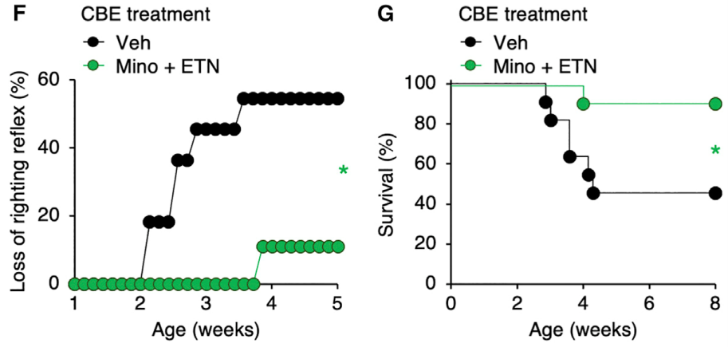Core benefit
- Microglia-targeted therapy based on the newly identified the mechanism remedy neurological symptoms
- This proposed therapy is applicable together with β-GlcCer-targeted therapies
- Key symptoms and features in GD mice models are shared with GD patients
Background and Technology
Gaucher disease (GD) occurs in 1 in 50,000 to 100,000 people in the world-wide population. GD is a lysosomal storage disease caused by autosomal recessive mutations in glucocerebrosidase (GCase, GBA), an enzyme that degrades β-glucosylceramide (β-GlcCer). As a consequence of β-GlcCer accumulation, GD patients exhibit typical symptoms, such as hematological, visceral, skeletal, and neurological abnormalities, but the pathogenesis of β-GlcCer is not fully understood.
Current first-line treatment is enzyme replacement therapy (ERT); however, the effectiveness of ERT in treating the neuronopathic symptoms in GD is limited, and different therapeutic targets in the brain need to be identified. Although β-GlcCer or a related metabolite cause intrinsic toxicity in neurons, the extrinsic effects of β-GlcCer accumulation on surrounding cells remain unclear.
In this project, researchers newly found that β-GlcCer accumulating in GD activated microglia through macrophage-inducible C-type lectin (Mincle) to induce phagocytosis of living neurons, which exacerbated Gaucher symptoms. This process was augmented by tumor necrosis factor (TNF) secreted from activated microglia that sensitized neurons for phagocytosis. These findings are demonstrated by using genetic and pharmacological GD models. This characteristic pathology was also observed in human neuronopathic GD.
Blockade of this pathway by combination of approved drugs improve neurologic symptoms and survival. The drugs are etanercept (ETN, a soluble TNF receptor) and minocycline (Mino, a known inhibitor of microglia activation).
Patent and Publication
- Patent filed, not yet published
- Shimizu et al., 2023, Immunity 56, 307–319
Principal Investigator
Prof. Sho Yamasaki (Department of Molecular Immunology, Research Institute for Microbial Diseases, Osaka University)
Current stage and Partnering
We are seeking a partner interested in drug development based on this research result.
Project No. TT-04599



